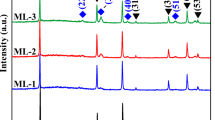Abstract
A flow battery is one of the most promising candidates for large scale energy storage devices due to its ease of design, construction, and control, while its energy density is yet to be enhanced. The lithium ion suspension electrode, which is usually comprised of electrolyte, active material and other additives, is an effective way to enhance the energy density of flow batteries due to their relatively high active material loading per unit of volume. However, a stable suspension electrode is difficult to be obtained mainly for two reasons, the high density of common electrode materials and the poor conductive network in the suspension. In this work, a stable Li4Ti5O12 (LTO) suspension anolyte is successfully prepared with the aid of polyethylene oxide (PEO) and carbon nanotubes (CNTs), in which PEO stabilizes the anolyte by intramolecular repulsion force, and CNT builds an integrated conductive network. The anolyte delivers a high reversible capacity of more than 140 mA h/g under 0.5C rate, and it keeps more than 80% of its initial capacity in 200 cycles was never been achieved in any previous research work. This strategy is also hopefully suitable for the design of other suspension electrodes, such as graphite and LiFePO4, which shine a light on high energy density flow battery development.






Similar content being viewed by others
REFERENCES
F. Pan and Q. Wang, Molecules 20, 20499 (2015).
D. Larcher and J. M. Tarascon, Nat. Chem. 7, 19 (2015).
C. J. Barnhart, M. Dale, A. R. Brandt, and S. M. Benson, Energy Environ. Sci. 6, 2804 (2013).
G. L. Soloveichik, Chem. Rev. 115, 11533 (2015).
C. Wang, Q. Lai, K. Feng, et al., Nano Energy 44, 240 (2018).
K. Wang, K. Jiang, B. Chung, et al., Nature (London, U.K.) 514, 348 (2014).
S. Xu, Y. Cheng, L. Zhang, et al., Nano Energy 51, 113 (2018).
J. M. Álvaro Cunha, N. Rodrigues, and F. P. Brito, Int. J. Energy Res. (2014).
C. A. Aubin, S. Choudhury, R. Jerch, et al., Nature (London, U.K.) (2019).
B. Li and J. Liu, Natl. Sci. Rev., nww098 (2017).
S. Xu, L. Zhang, X. Zhang, et al., J. Mater. Chem. A 5, 12904 (2017).
Y. Lu and J. B. Goodenough, J. Mater. Chem. 21, 10113 (2011).
W. Yan, C. Wang, J. Tian, et al., Nat. Commun. 10, 2513 (2019).
M. Duduta, B. Ho, V. C. Wood, et al., Adv. Energy Mater. 1, 511 (2011).
S. Xu, L. Zhang, X. Zhang, et al., J. Mater. Chem. A 5, 12904 (2017).
F. Y. Fan, W. H. Woodford, Z. Li, N. Baram, et al., Nano Lett. 14, 2210 (2014).
L. Madec, M. Youssry, M. Cerbelaud, et al., J. Electrochem. Soc. A 161, 693 (2014).
J. Israelachvili, Intermolecular and Surface Forces (Academic, London, 1992).
T.-S. Wei, F. Y. Fan, A. Helal, et al., Adv. Energy Mater. 5, 1500535 (2015).
L. Madec, M. Youssry, M. Cerbelaud, et al., Chempluschem 80, 396 (2015).
Lithium Titanate (LTO) Cells–Technical Advantages (GWL Power, 2018).
LTO Batteries (AA Portable Power Corp., 2018).
R. B. S. Ball, Johnson Matthey Technol. Rev. 59, 30 (2015).
K. Xu, Chem. Rev. 114, 11503 (2014).
D. E. Fenton, J. M. Parker, and P. V. Wright, Polymer 14, 589 (1973).
L. Gitelman, M. Israeli, A. Averbuch, et al., J. Comput. Phys. 227, 1162 (2007).
S. K. Fullerton-Shirey and J. K. Maranas, Electrolytes 42, 2142 (2009).
P. V. Wright, Br. Polym. J. 7, 19 (1975).
G. Zardalidis, E. Ioannou, S. Pispas, and G. Floudas, Macromolecules 46, 2705 (2013).
H. Chen and Y.-C. Lu, Adv. Energy Mater. 6, 1502183 (2016).
ACKNOWLEDGMENTS
This work was supported by the National Key Research and Development Program of China (2016YFB0100100), National Natural Science Foundation of China (21706261), Beijing Natural Science Foundation (L172045). Muhammad Naeem acknowledges the support of the CAS-TWAS President’s Fellowship Program.
Author information
Authors and Affiliations
Corresponding authors
Supplementary Information
Rights and permissions
About this article
Cite this article
Naeem, M., Zhang, L., Qian, W. et al. A Highly Stable Li4Ti5O12 Suspension Anolyte for Lithium Ion Flow Batteries. Russ. J. Phys. Chem. 95 (Suppl 1), S163–S170 (2021). https://doi.org/10.1134/S0036024421140156
Received:
Revised:
Accepted:
Published:
Issue Date:
DOI: https://doi.org/10.1134/S0036024421140156




